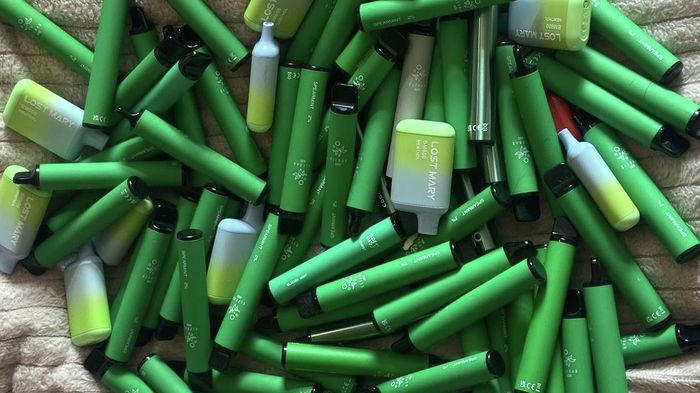How to keep your cardboard boat afloat
With the Cambridge cardboard boat race fast approaching, Caredig ap Tomos takes you through how cardboard boats float, and why they eventually sink

With just over two weeks until the cardboard boat race, teams are planning their designs to be the fastest, longest-lasting and prettiest cardboard crafts on the Cam. But how do you design the best cardboard boat? How do they float, and why do they break apart in the water?
The science behind keeping your boat afloat
You likely have some intuition as to what objects float already. Light objects tend to float, while heavy objects sink. Yet somehow million-tonne cargo ships are able to float. How do they achieve this? By exploiting Archimedes’ principle.
“Hopefully, the Varsity team doesn’t throw me in the River Cam for spilling our secrets”
The Greek philosopher Archimedes discovered that the key factor in determining whether an object floated was not its weight but its density. This is because the force that pushes an object out of the water is equal to the weight of water it pushes aside when it enters. A dense object has a lot of weight in a very small volume, and so the force pushing it up to the surface is much less than the force pulling it into the water.
Boats are able to avoid sinking because so much of their volume is filled with air. With all this effectively empty space, the average density of the boat is reduced and so the water is better able to push it out.
“What is the best way to keep your boat afloat then? Build a bigger boat!”
What is the best way to keep your boat afloat then? Build a bigger boat! In particular, tall walls to your boat help you maximise the volume of water you can displace. Tall walls can also help you keep the water out, which is the fastest way for your boat to sink.
Soggy cardboard: Why you’ll (eventually) sink...
Eventually your boat will succumb to the same fate as all others and become a soggy brown mess. But why does cardboard take up this water, and why does cardboard lose all its strength when it does?
Cardboard is essentially paper arranged in a fancy way to give it more strength. Paper is made from wood pulp that is bound together by natural compounds in the wood to form a thin sheet. The pulp, however, leaves tiny pores in the structure of the paper. Due to an effect called surface tension, water is able to pull itself up through the gaps in the paper and fill the space in between. This is the same principle that causes your biscuit to suck up your tea.
“The only way to know which cardboard is best is to test it”
Once inside the structure of the cardboard, water is able to cause havoc with the paper’s materials. The water can dissolve much of the compounds that bind the paper together. What doesn’t dissolve gets weakened. On top of this, water causes the pulp to swell and push apart the fibres it is made of.
While this is inevitable for all cardboard, not all cardboard is made the same. Some higher quality cardboard is made with paper that has much fewer pores in its microstructure for water to get into. The only way to know which cardboard is best is to test it, so don’t be afraid to set up a little experiment.
The key to speed
If you want any chance to zip past your competition, you’re going to need two main things: a paddle to propel yourself as quickly as possible, and a boat that won’t slow you down. Both of these things however are dictated by the same principle: drag.
Drag is the force that resists the motion of an object through a fluid whether that be water, air or the questionable liquid that makes up the River Cam. Drag will slow down your boat as it speeds through the water because the force it exerts saps it of kinetic energy. Drag, however, is vital for paddles to function, as by pulling a paddle through the water, the drag on your paddle will push the boat forward.
Drag is largely dictated by one property, the cross sectional area of the object moving through the fluid. For a boat, this can be thought of as the area of the front of the boat, and so a boat with a very small front profile is likely to have the least resistance moving through the water. For a paddle on the other hand, a large surface area will go a long way to giving you the best push to keep you going.
Together these tips should help you stay afloat of the competition. Hopefully, the Varsity team doesn’t throw me in for spilling our secrets.
 News / SU reluctantly registers controversial women’s soc18 December 2025
News / SU reluctantly registers controversial women’s soc18 December 2025 News / CUP announces funding scheme for under-represented academics19 December 2025
News / CUP announces funding scheme for under-represented academics19 December 2025 Features / Should I stay or should I go? Cambridge students and alumni reflect on how their memories stay with them15 December 2025
Features / Should I stay or should I go? Cambridge students and alumni reflect on how their memories stay with them15 December 2025 News / Cambridge welcomes UK rejoining the Erasmus scheme20 December 2025
News / Cambridge welcomes UK rejoining the Erasmus scheme20 December 2025 Science / ‘Women just get it more’: autoimmunity and the gender bias in research19 December 2025
Science / ‘Women just get it more’: autoimmunity and the gender bias in research19 December 2025










